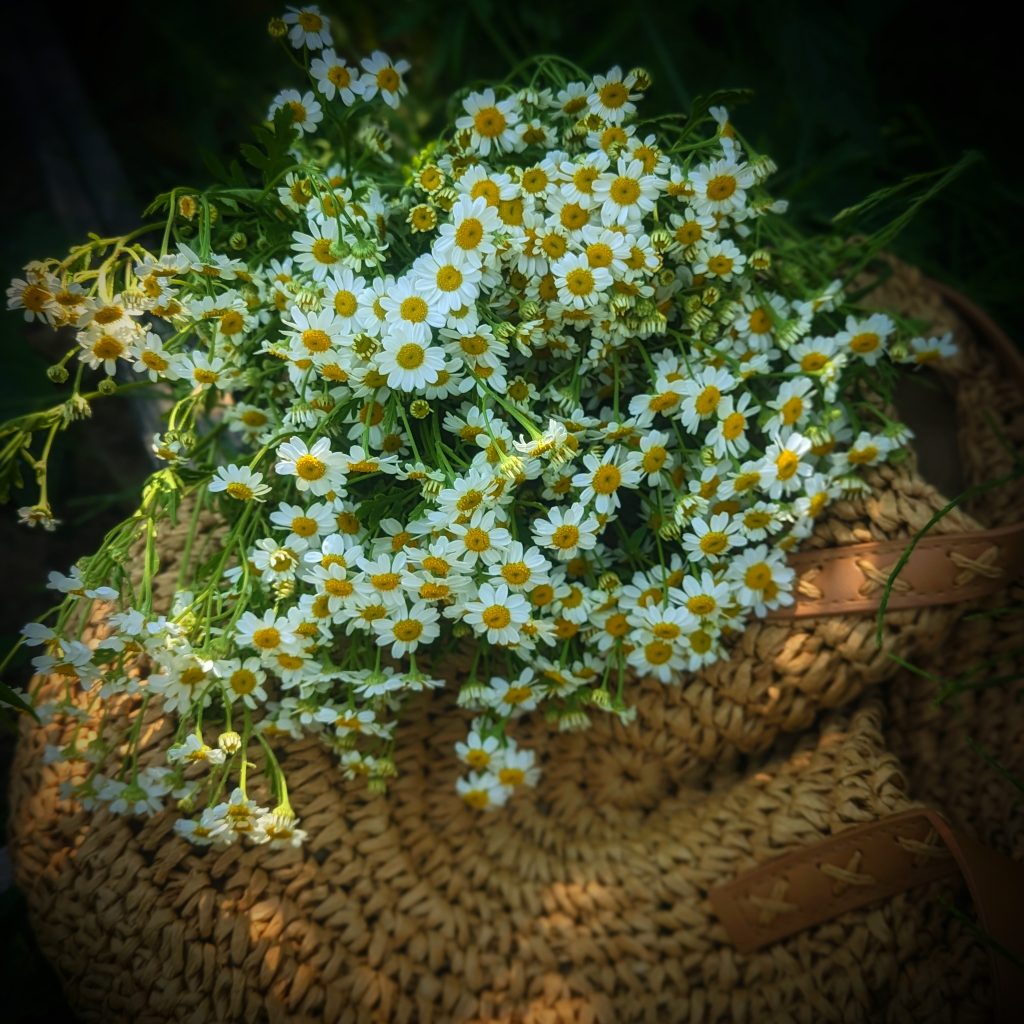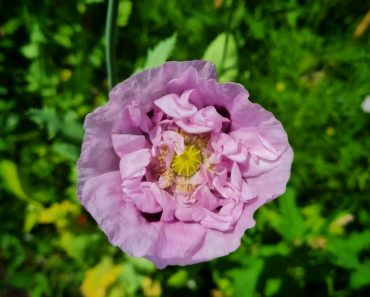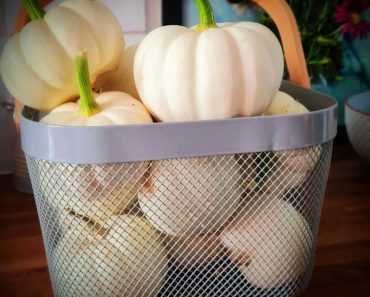Feverfew (Tanacetum parthenium) is a short-lived bushy perennial that produces dainty daisy-like flowers during the Summer Months. Not just for show! These delicate flowers have wonderful medicinal benefits too! Find out why Feverfew is good for you and your Garden…

This post may contain Affiliate links please see my disclosure policy
Feverfew Origins
Feverfew has been used as a medicinal herb for well over 2000 years! Originating in south- eastern Europe, feverfew soon found its way to the rest of Europe and then on to North, Central and South America, Oceania, large parts of Asia and North Africa. Through human cultivation this powerful little plant became popular worldwide, mainly do to its use as a herbal medicine…
Feverfew Characteristics
Feverfew is a short-lived hardy perennial. A semi evergreen plant with fragrant, fern-like foliage and composite daisy like flowers with white petals and yellow centres. It has a bush growth habit reaching a height and spread of 30cm. Flowers will appear the first year if sown in early spring.

The Medicinal Benefits Of Feverfew
Ancient uses of Feverfew
The German name for Feverfew is “Mutterkraut” (mother’s herb), so named due to its beneficial effect on pregnancy. German Mothers often used the herb to induce labour and speed up the birthing process. Ancient Greek Physicians once used the herb to reduce inflammation and ease menstrual problems.
Feverfew Benefits Today
Feverfew (Tanacetum parthenium) in modern herbal medicine is traditionally used for the treatment of fevers, migraines, arthritis, stomach aches, insect bites, toothaches and ‘ladies complaints’. A cup of healing Feverfew Tea is helpful as a natural anti-inflammatory and a natural antihistamine. It has similar effects to Aspirin but without any of the side effects, for example -overuse of Aspirin can lead to internal stomach wall bleeding.
Other Feverfew Tea Benefits
- Can aid a restful sleep
- Promotes good digestion
- Relieves Hay fever Symptoms
- May offer relief with Arthritis and Rheumatism
- May help to sooth muscle spasms
- Mild Laxative
- Ease Melancholy
How To Make Feverfew Tea
- First Harvest healthy Feverfew foliage and flowers. Do this around mid morning, July-October once all the morning dew has evaporated. Cut with a knife or gardening shears, leaving 2/3 of the plant intact.
- You can make Feverfew tea with fresh cuttings or you can prepare a tea from dry leaves and flowers (*It is best to dry feverfew flowers and leaves for long term term storage)
- To Prepare a tea simply add 1 tsp of fresh or dry Feverfew leaves and flowers to a Tea Ball or Tea Bag and steep for 5-10 minutes in hot water.
How to Dry Feverfew
For long term storage of feverfew it is important that you dry the leaves and flowers thoroughly first. This will prevent any mould from forming. You can dry them by either popping leaves and flowers in a dehydrator on the lowest setting for 12 hours, or simply hang them to dry in a sheltered dark environment for 1-2 weeks.
What Does Feverfew Tea Taste Like?
Feverfew tea has a distinctive, bitter taste, for some added sweetness stir a dollop of honey in it
Useful Tools For Harvesting and Preparing Feverfew Tea
Affiliate Links

How To Grow Feverfew from seed
Other Names : Bachelor’s buttons, mid-summer daisy, featherfew, flirtwort, Santa Maria, Mother-herb, altamisa, featherfoil
How To Sow Feverfew seeds
- Sow feverfew seeds indoors or under glass from February – July. *When seeds are started early, plants will bloom their first year.
- Sow seed in trays, pots or modules on the surface of moist compost, cover lightly with a sprinkling of compost
- Place on a sunny windowsill and cover with a propagator id or cling wrap until seedlings appear. Germination should take place within 10-30 days.
- When seedlings are large enough to handle, prick out and pot on into larger pots. Plant out after all risk of frost has passed. Be sure to harden off indoor raised plants first.

What Does Hardening Off Mean?
Plants raised indoors or in a greenhouse environment, need to be acclimatised to cooler temperatures and increased air movement for about two to three weeks before they are planted outdoors permanently . This is a ‘toughening up’ practice to prepare the plants for their new environment.How to Harden Off
Place your plants out for a couple of hours in a shady part of the garden. The next day, leave them out again for two hours, but this time allow the plants an hour of direct sunshine in the morning. Gradually continue to increase the length of time the plants are in direct sunshine over the course of roughly two weeks.
Where To Plant Feverfew
Plant feverfew 30cm apart in a well drained soil in a full sun position.
Feverfew Water Requirements
Once established feverfew requires very little maintenance, occasional watering is sufficient. However, if you are experiencing particularly dry periods, water more regularly.
Deadheading
Harvest feverfew flowers and leaves as required throughout the summer months and deadhead any spent flowers to prevent self seeding.
What To do with Feverfew when the flowering ends
When to Cut Back Feverfew? Cut back to ground level in Autumn and await new growth in the spring.
Natural Bug Repellant!
Top Tip! Feverfew is a fantastic bug repellant, plant them near doorways to deter the little beasts from entering your house
Perfect for..
- Cottage gardens
- Wildlife gardens
- Urban Gardens and Courtyard gardens
- Flower beds and borders
More Healing Teas
- Milk Thistle Tea
- Nettle Tea
- Raspberry Leaf Tea
- How To Harvest and Make Dandelion Root Tea
- How To Harvest And Use Horsetail in a Healing Tea
Looking For more ‘Homely’ Inspo ?
Have a Nosey Around the Blog! See what i’ve been Baking, Growing and Drinking! Also, pop over and say Hi on Instagram
*Any specific health claim or nutritional claims or information provided on the Website are for informational purposes only. Nothing on the Website is offered or intended to be a substitute for professional medical, health, or nutritional advice, diagnosis, or treatment. This Website is not intended to diagnose, treat, cure or prevent any disease. You assume full responsibility for consulting a qualified health professional regarding health conditions or concerns.








I truly appreciate this post. I have been looking everywhere for this! Thank goodness I found it on Bing. You have made my day! Thx again